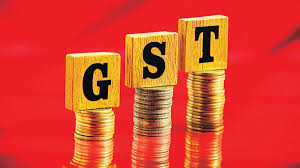- India’s GST income increased by 12.54% in February, surpassing ₹1.68 lakh crore.
- This was the fourth-highest monthly collection since the GST’s establishment.
Why are we discussing this?
- Since its implementation in July 2017, India’s Goods and Services Tax (GST) system has played an important role in the country’s tax structure.
- Analysing GST revenue trends and performance provides information into the nation’s economic health and growth trajectory.
Gross Revenue Overview
- Yearly Comparison: The fiscal year 2023-24 had a significant gain, hitting ₹18.4 lakh crore, up 11.7% from the previous year.
- Yearly Increase: This year’s growth is the third largest since the introduction of GST.
- Domestic Transactions: Revenue from domestic transactions increased 13.9%.
- Imported Goods: Revenue from goods imports rose 8.5%.
State-wise Breakdown
- After accounting for refunds, February’s GST revenue was ₹1.51 lakh crore, a 13.6% increase over the previous year.
- State Variability: States performed differently, with some experiencing decreases and others exceeding national growth norms.
- Revenues fell in five states, with Mizoram and Manipur particularly hard hit.
- Twelve states, including Jammu and Kashmir, Assam, and Maharashtra, have outperformed the national average growth rate.
Compensation Cess Details:
- In February, the gross GST intake totaled ₹84,098 crore, including CGST, SGST, and IGST.
- Cess receipts: Compensation cess receipts totaled ₹12,839 crore, including money from imported items.
- Revenue Distribution: The Central Government allocated significant amounts to CGST and SGST from IGST receipts.
- After normal distributions, the CGST received ₹73,641 crore and the SGST received ₹75,569 crore.
About Goods and Services Tax (GST)
- GST is an indirect tax that superseded other indirect taxes in India, including excise duty, VAT, and services tax.
- Legislation: The GST Act was passed in Parliament on March 29, 2017, and went into effect on July 1, 2017. There is a single domestic indirect tax law for the entire country.
- Tax structure: It is a comprehensive, multi-stage, destination-based tax imposed on all value additions.
- Taxing Points: The GST scheme levies a tax at every point of sale. In the case of intra-state sales, both Central GST and State GST are imposed. All inter-state sales are subject to the Integrated GST.
GST components:
- The Central Government collects CGST on intra-state sales (for example, a transaction in Maharashtra).
- SGST is the state government’s tax on an intra-state sale (for example, a transaction within Maharashtra).
- IGST is a tax levied by the Central Government on interstate sales (for example, Maharashtra to Tamil Nadu).
Advantages of GST
- The GST has largely eliminated the cascading effect on the sale of goods and services.
- The removal of the cascading effect has affected the cost of items.
- Because the GST regime eliminates the tax on tax, the cost of goods falls.
- Furthermore, GST is primarily technologically driven.
- All operations, including registration, return filing, refund application, and notice response, must be completed online using the GST portal, which speeds up the process.
Issues with GST
- High operating costs.
- GST has increased the difficulty for many business owners across the country.
- GST has been criticised for being referred to as a ‘Disability Tax’ because it now taxed items such as braille paper, wheelchairs, and hearing aids.
- Fuels are not subject to GST, which contradicts the concept of commodity unification.
Source: https://www.thehindu.com/business/Economy/gst-collections-up-1254-in-february-2024/article67904793.ece#:~:text=India's%20gross%20revenues%20from%20the,monthly%20collections%20from%20the%20tax.

